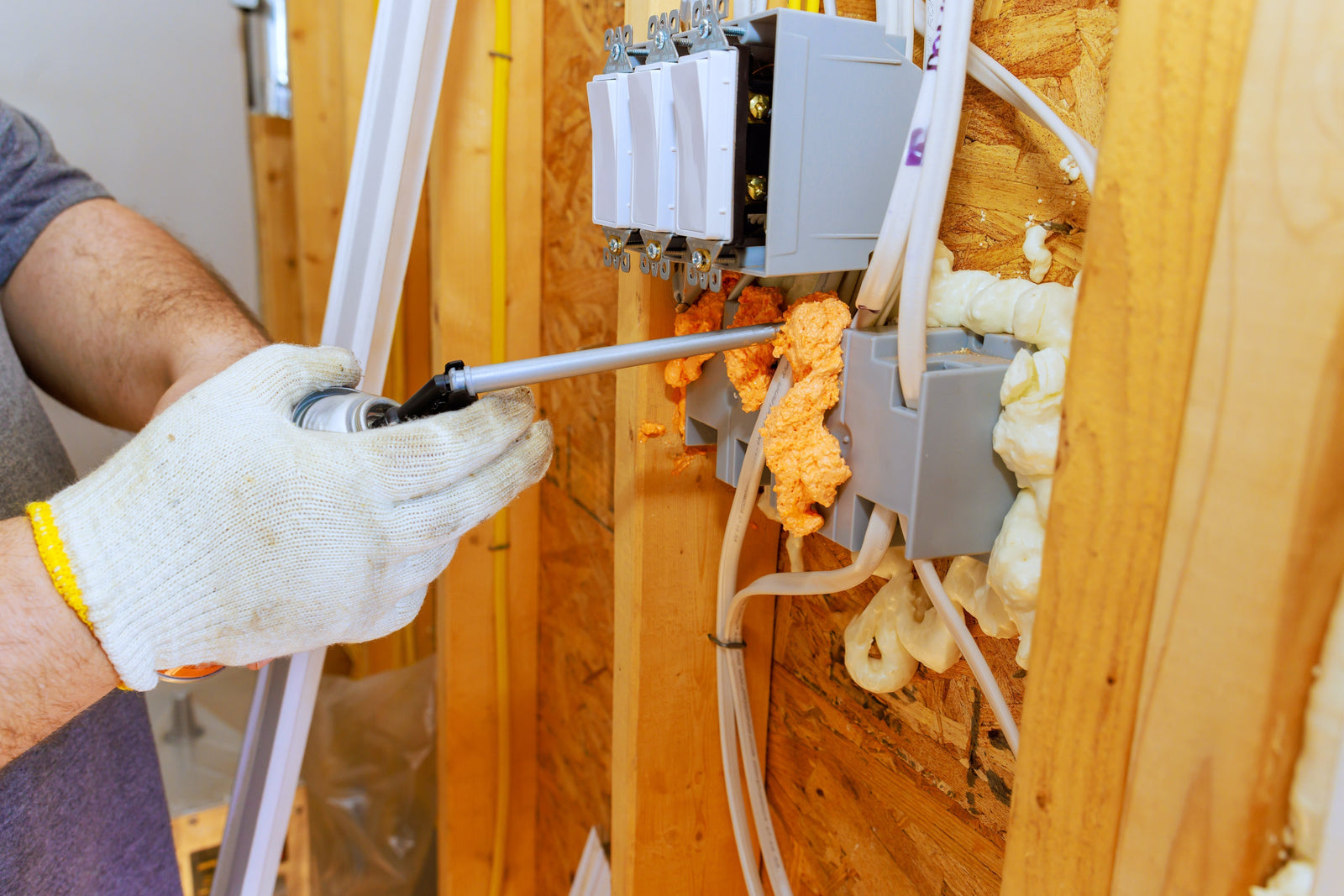Electrical boxes are the backbone of safe wiring, but one small mistake can lead to major consequences. Consider these real-world scenarios:
A homeowner in Texas used an undersized plastic box for a garbage disposal—overheating melted the box, causing a $3,000 kitchen fire.
An electrician in Florida failed to ground a metal box properly—resulting in electrocution hazards and a failed inspection that delayed a project by two weeks.
At Togalonn, we’ve engineered our UL-listed electrical boxes to help prevent these costly errors. This guide dives deep into 10 critical mistakes—with real examples, calculations, and fixes—so you can install with confidence.
Browse Togalonn’s Safety-Tested Electrical Boxes
Table of Contents
- Mistake #1: Choosing the Wrong Box Size
- Mistake #2: Poor Box Placement
- Mistake #3: Ignoring Load Capacity
- Mistake #4: Incorrect Grounding
- Mistake #5: Overcrowding Wires
- Mistake #6: Using Damaged or Non-Compliant Boxes
- Mistake #7: Skipping Weatherproofing in Outdoor Installations
- Mistake #8: Not Securing the Box Properly
- Mistake #9: Forgetting Future Access
- Mistake #10: Ignoring Local Electrical Codes
- Pro Tips for Flawless Electrical Box Installation
- Why Choose Togalonn’s Electrical Boxes?
- Conclusion
Mistake #1: Choosing the Wrong Box Size
The Danger:
An overloaded box traps heat, melting wire insulation and potentially starting fires.
Real Case:
A Chicago DIYer packed six 12-gauge wires into a 14 cu. in. plastic box (minimum required: 18 cu. in.). After 3 months, the overheated wires tripped breakers and required a full rewire.
The Solution:
Calculate box volume per NEC 314.16:
14 AWG wire: 2.25 cu. in. per conductor
12 AWG wire: 2.5 cu. in.
Add extra space for clamps, devices, and grounds
Use Togalonn’s Box Size Calculator to avoid guesswork.
For large installations, opt for Togalonn’s Jumbo Deep-Shell Boxes (30+ cu. in.).
Mistake #2: Poor Box Placement
The Danger:
Misaligned boxes cause crooked switches, cracked drywall, and frustrated electricians.
Real Case:
A contractor in Arizona installed boxes flush with studs—after drywall, outlets sunk 1/2" behind the wall, requiring costly reframing.
The Fix:
✔ Depth Guidelines:
New construction: Set boxes 1/2" proud of studs to align with drywall.
Remodels: Use Togalonn’s Adjustable Depth Boxes to fine-tune positioning.
✔ Spacing: Keep boxes at least 1/4" apart to prevent drywall cracks.
Mistake #3: Ignoring Load Capacity
 The Danger:
The Danger:
High-amperage devices (like EV chargers) can warp plastic boxes over time.
Real Case:
A California homeowner installed a 50-amp RV outlet in a standard plastic box.
After 6 months, heat distortion cracked the box, exposing live wires.
The Solution:
For 30A+ circuits, use Togalonn’s Heavy-Duty Steel Boxes (tested to 150°F).
Follow the 80% rule: Never exceed 80% of the box’s rated capacity.
Mistake #4: Incorrect Grounding
The Danger:
Ungrounded metal boxes become shock hazards.
Real Case:
A handyman in New York used a plastic-coated ground screw in a metal box.
The faulty ground caused tingling sensations when touching appliances.
The Fix:
✔ Proper Grounding Steps:
Use #10-32 grounding screws (not drywall screws!).
Bond all metal parts with bare copper wire.
Togalonn’s Pre-Grounded Boxes include integrated lugs for foolproof installation.
Mistake #5: Overcrowding Wires
The Danger:
Crammed wires overheat and violate NEC 314.16(B).
Real Case:
An electrician in Ohio stuffed 8 wires + a GFCI into a 20 cu. in. box.
The resulting heat fried the GFCI within weeks.
The Solution:
✔ Wire Fill Cheat Sheet:
|
Wire Size |
Min. Cu. In. per Wire |
|
14 AWG |
2.25 |
|
12 AWG |
2.5 |
|
10 AWG |
3.0 |
✔ For complex setups, Togalonn’s Wide-Body Boxes offer 40+ cu. in.
Mistake #6: Using Damaged or Non-Compliant Boxes
 The Danger:
The Danger:
Cheap, uncertified boxes crack, warp, or fail inspections.
Real Case:
A Florida builder used non-UL boxes to save $0.50 each—the entire job failed inspection, costing $8,000 in replacements.
The Fix:
✔ Inspect Every Box:
Check for cracks, rust, or mold marks.
Verify UL 514A or NEC compliance.
✔ Togalonn’s UL-Certified Boxes include batch-tested QR codes for verification.
Mistake #7: Skipping Weatherproofing in Outdoor Installations
The Danger:
Water + electricity = fires or shorts.
Real Case:
A Georgia homeowner installed indoor boxes in a screened porch—humidity corroded terminals in 4 months.
The Solution:
✔ Outdoor Box Must-Haves:
NEMA 4X rating (resists rain, ice, dust)
Silicone gaskets (like Togalonn’s WeatherSeal Series)
Conduit hubs to block moisture entry
Mistake #8: Not Securing the Box Properly
The Danger:
Loose boxes strain wires, causing arc faults.
Real Case:
A vibrating HVAC unit shook a loose box in Michigan, fraying wires over 2 years until a breaker finally tripped.
The Fix:
✔ Mounting Best Practices:
Use two screws/nails per box.
In high-vibration areas, install Togalonn’s Anti-Rattle Boxes with rubber isolators.
Mistake #9: Forgetting Future Access
 The Danger:
The Danger:
Buried junction boxes violate NEC 314.29 and require wall demolition to access.
Real Case:
A Colorado remodeler drywalled over a box—later, troubleshooting required cutting open the ceiling.
The Solution:
✔ Access Strategies:
Label boxes ("J-Box A: Kitchen Lights")
Use Togalonn’s AccessPanel Covers for clean, removable access.
Mistake #10: Ignoring Local Electrical Codes
The Danger:
Local amendments (like Chicago’s metal-box requirement) trump NEC.
Real Case:
A Texas electrician used PVC boxes—failed inspection because Dallas requires fire-rated boxes.
The Fix:
✔ Research Local Rules:
Check municipal electrical codes.
Togalonn’s Code Compliance Guide covers 50+ U.S. cities.
Pro Tips for Flawless Electrical Box Installation
Measure Twice: Ensure perfect box height and depth before cutting.
Use a Box Level: Avoid crooked installs with a simple leveling tool.
Label Wires: Use color-coded labels for easy troubleshooting later.
Pre-Plan Circuits: Sketch your layout before running wire to avoid overfilling.
Test Everything: Always use a voltage tester before connecting wires.
Why Choose Togalonn’s Electrical Boxes?
At Togalonn, we’re more than a brand — we’re a manufacturer that understands what professionals need. Here’s why thousands trust us:
✅ UL-Listed and code-compliant products
✅ Durable materials built to withstand jobsite wear and tear
✅ Wide range of box sizes for any installation type
✅ Weatherproof options for outdoor or damp locations
✅ Consistent weekly SEO articles and guides to support the trade
Whether you're wiring a new home, upgrading a commercial facility, or installing complex industrial systems, Togalonn’s junction boxes are built to perform and pass inspection the first time.
Conclusion

Before cutting, make sure the box is the ideal height and depth by taking two measurements.
Employ a Box Level: Use a basic leveling tool to prevent crooked installs.
Label Wires: To make troubleshooting easier later, use color-coded labels.
Prepare the circuits in advance: To prevent overfilling, sketch the plan before running wire.
Test Everything: Prior to connecting wires, always use a voltage tester.
Not only does avoiding electrical box installation errors save money, but it also ensures public safety, passes inspections, and produces results of a high caliber.
Every step counts, from selecting the appropriate box size to ensuring enough grounding and adhering to regulations. When you pair Togalonn's high-quality products with best practices, you're investing in long-term peace of mind, safety, and dependability.
Are you having trouble selecting the correct junction box?
For product recommendations, technical assistance, or questions about bulk orders, get in touch with the Togalonn team right now. One box at a time, let's construct safer systems.

